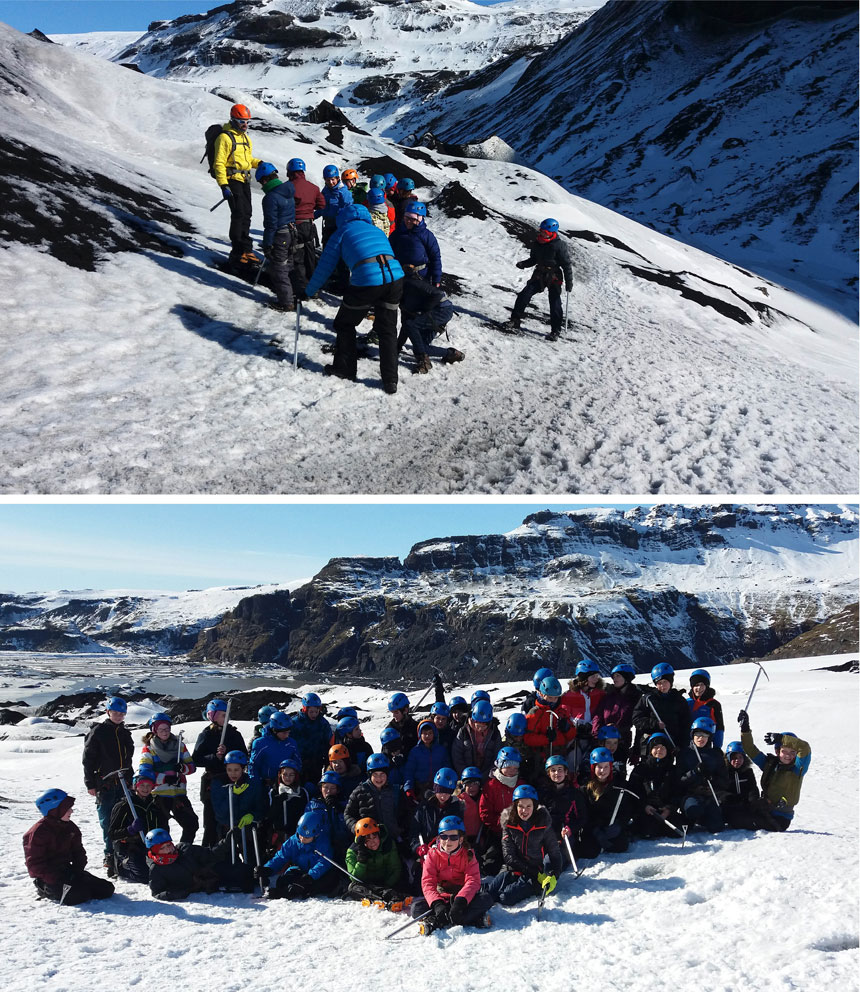During the Easter break, a group of Senior House Geographers and Scientists set out to explore the wonders of Iceland. The children investigated volcanic activity, lava fields, hot springs, geysers, stunning waterfalls, dark, mysterious beaches and got to experience the heat and vibrancy of flowing lava.
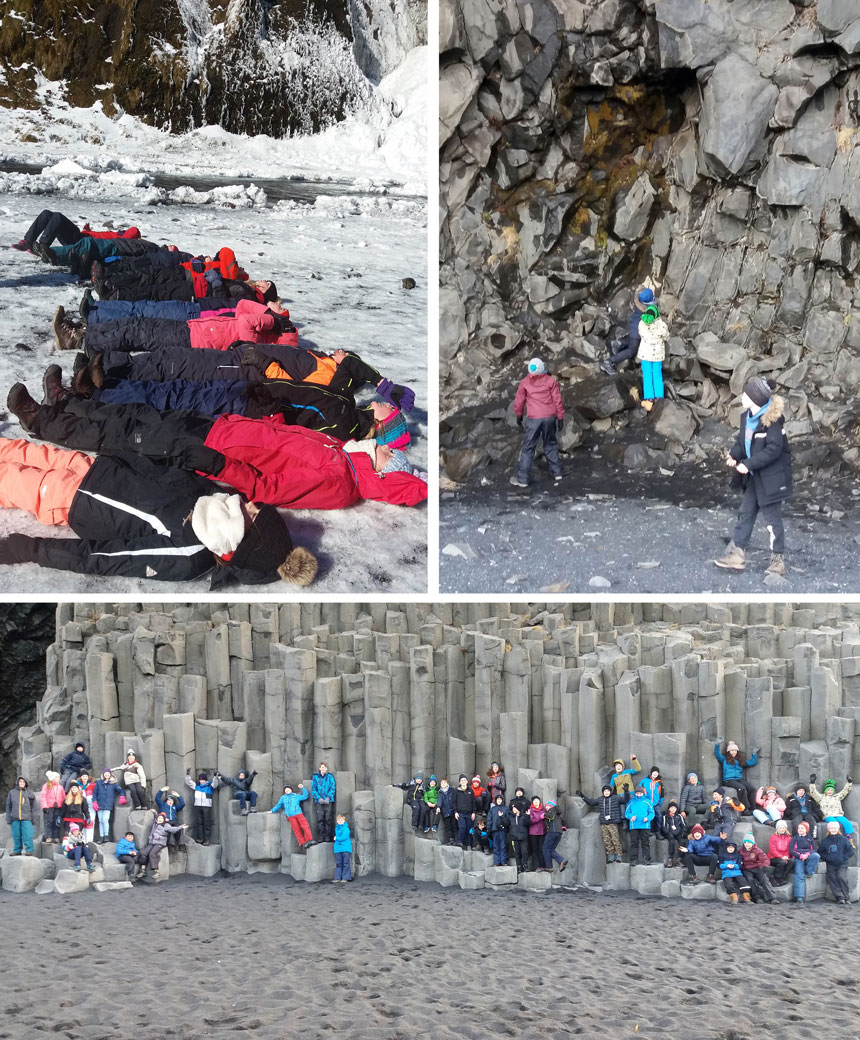
Their first stop was the Leif the Lucky Bridge that divides the North American and Eurasian tectonic plate and spans the fissure called the Mid Atlantic Ridge. The children witnessed the effects of continental drift before relaxing at the Blue Lagoon. The geothermally heated seawater is rich in natural minerals and allows bathers to float effortlessly in the blue opaque water. The mud packs and smoothies were well received!
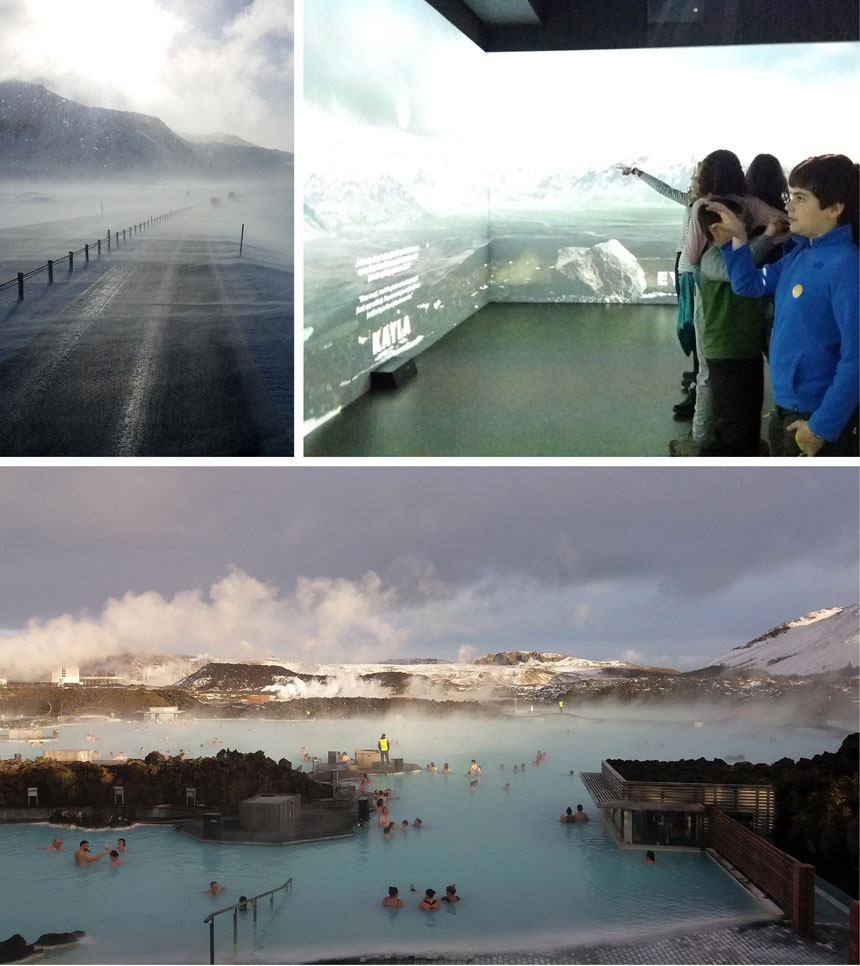
The next day the children toured Hellisheidi, the second largest geothermal power plant in the country, providing renewable, clean electricity and hot water for Reykjavik and industry on the island. They produce enough hot water to heat the roads to keep them clear of snow. Many of the children found this visit particularly fascinating as it coincided with their school studies on sustainability. This was followed by the newly built LAVA Centre in Hvollsvollur, an interactive display of the many aspects of Iceland’s unique geology. At the frozen glacier tongue of Solheimajokull the group completed a glacier walk with crampons and ice axes, providing the chance to see the effects of climate change on the retreating glacier. In the evening, they visited the Icelandic Lava Show to experience the heat and viscosity of flowing lava.
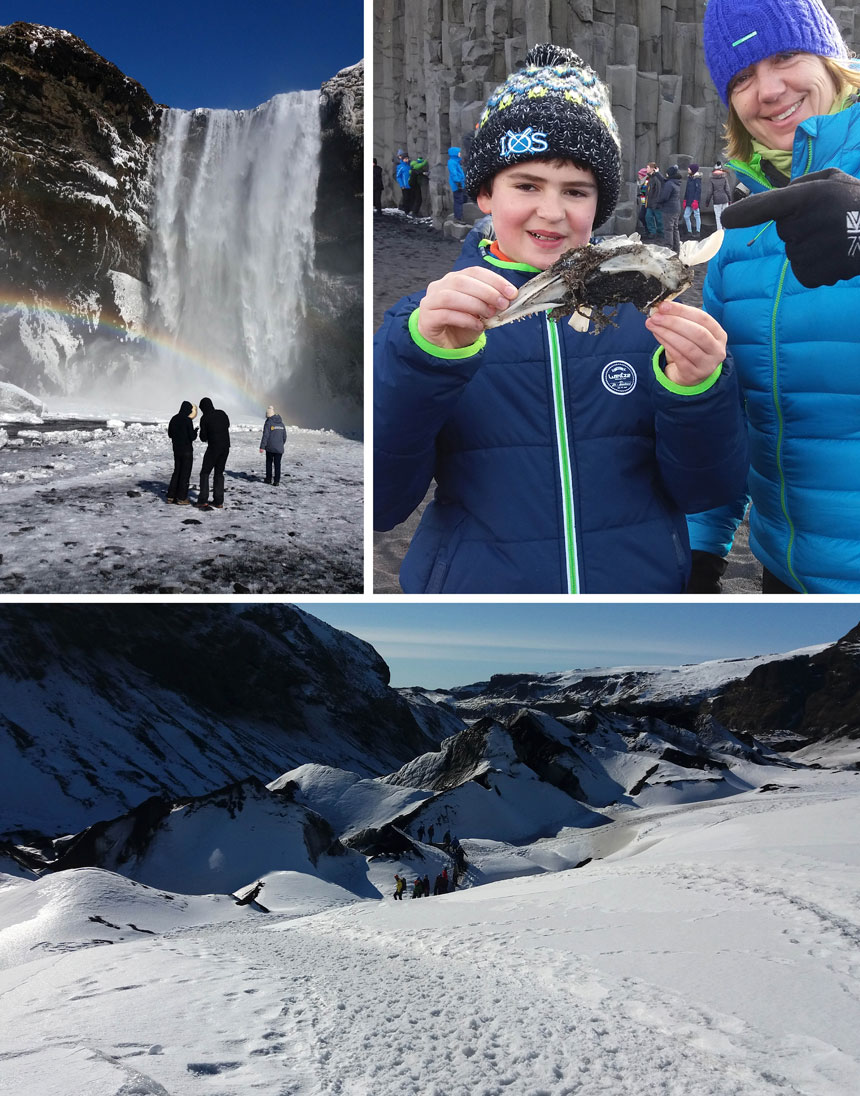
The following day the children visited the tiny village of Vik, walked along Reynishverfi’s black sands, and viewed the Reynisdrangar sea stacks. They saw how humans have responded to volcanic threats through the building of dykes to protect the village as well as viewing the basalt columns. The next stop was Seljalandsfoss waterfall, which is a former sea cliff, now located inland due to isostatic rebound.
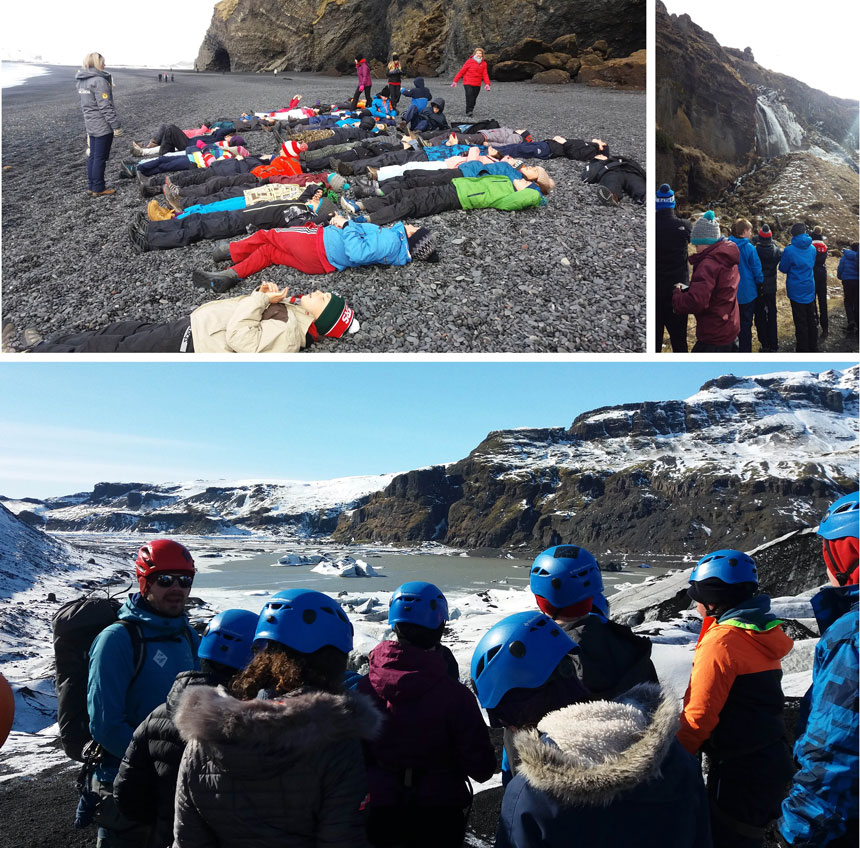
At Thingvellir National Park the children discovered that this region was where Iceland’s parliament was established in 930AD. They learnt that the Eurasian and North American plates are pulling apart about 3cm a year. They saw ropy pahoehoe lava from shield volcanoes and experienced the clear waters of the Peningagjá fissure. One of the most photographed waterfalls in Iceland, Gullfoss waterfall, was next on the agenda and they viewed the 33m drop and the mile long gorge on their walk. They moved onto the site of Geysir, a spouting hot spring that has given its name to all the world’s geysers. Despite rarely erupting, its neighbour, Strokkur, erupts every 10-15 minutes and the children experienced the spray from the spout. The day was spent visiting the truly wonderful aspects of Iceland called the Golden Circle. A whistle stop tour of the capital city completed this action-packed day with stops at the old port, central lake (Tjörnin), City Hall and the famous Sun Voyager Sculpture (Viking ship). Miss Anne-Marie Grant, Head of Geography, commented, “There is no place on earth where fire and ice can meet and create so many spectacular landforms. It is truly a magical place.”
